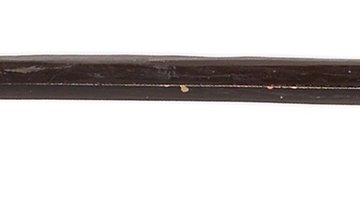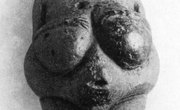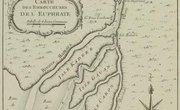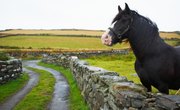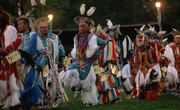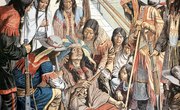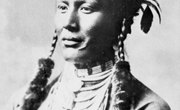Hunter-gatherers were early human beings who survived in small bands with the male members of the community doing most of hunting and the females completing most of the gathering. The era of human society being dominated by hunter-gatherers began to end around 8,000 B.C. when humans began to move toward farming and domesticating animals.
Community
Hunters and gatherers survived by hunting animals for meat, which provided protein, and fishing. Men, who would travel several miles from the camp area, did the hunting, and women gathered fruits, berries and insects close to the camp while caring for children. Hunter-gatherer societies were largely nomadic, according to the Education Place. The movement of early human societies was based largely on the movement of animals that could be hunted, with a return to hunting lands that coincided with the change of seasons and animal migration.
Animals
The prey were often large, roaming animals, such as the bison and mammoth. The movement of animals to feeding grounds meant the hunter-gatherers followed their movements. The number of calories consumed by early humans was largely from the gathering of fruits and berries, around 75 percent to 80 percent of the total consumed calories were from gathering, according to Lake Tahoe Community College. Man also hunted large mammals, such as the reindeer and horse, depending on the species native to a region.
Changes
Throughout the history of hunter-gatherers, small game animals were hunted to add to the available food for an early human community. Around 15,000 years ago, the humans known as upper Paleolithic people, such as the European Cro Magnon people, developed tools that allowed them to hunt smaller animals with ease to feed growing populations of humans. At this time in history tools such as the spear thrower allowed the hunting of small animals to become more important in the hunter-gatherer process.
Farming
Around 8,000 B.C. human societies began to largely move away from the hunter-gathering process to farming, especially in regions of North America and Asia, Lake Tahoe Community College reports. Big game animals, such as the bison, moved north, while the mammoth, a large source of food, became extinct. In this period of history humans began to domesticate animals, such as the sheep, cow and goat, for agricultural purposes.
Related Articles
References
Writer Bio
Paul Cartmell began his career as a writer for documentaries and fictional films in the United Kingdom in the mid-1990s. Working in documentary journalism, Cartmell wrote about a wide variety of subjects including racism in professional sports. Cartmell attended the University of Lincoln and London Metropolitan University, gaining degrees in journalism and film studies.

